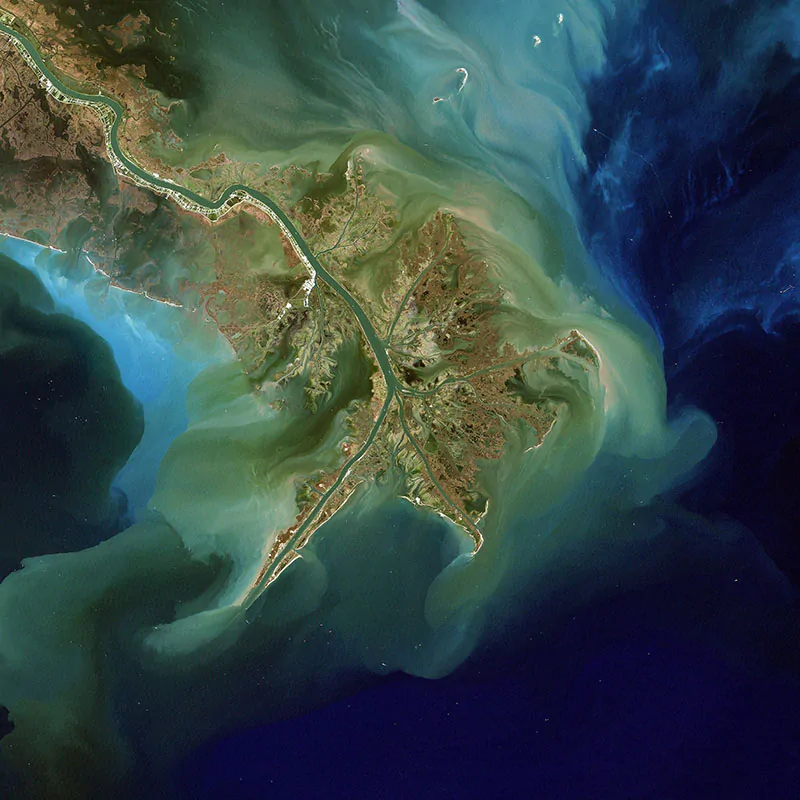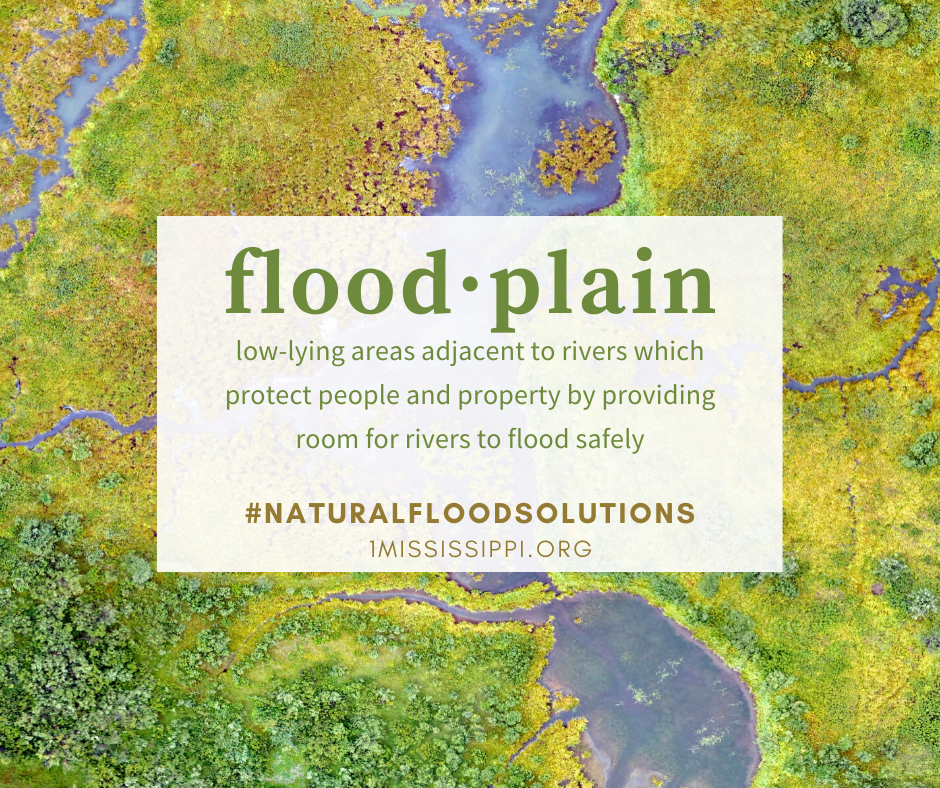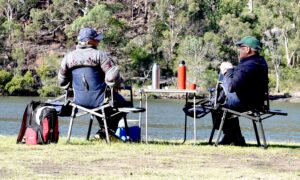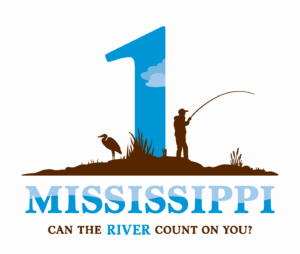Success Stories — Dogtooth Bend Restoration Project
The Dogtooth Bend project is part of the Nature Conservancy’s larger restoration effort called the “Mississippi River Basin Project.” This project has an important shared goal with MRN: reduce nutrient pollution in the Mississippi River Basin to address the Gulf Hypoxic “Dead Zone.”

Over the last few years, floodplain restoration has also emerged as a key objective of TNC’s Mississippi River Basin Project. This reflects the fact that connected and well-functioning floodplains provide numerous co-benefits, including flood risk reduction and habitat for recreation or conservation (all in addition to reducing nutrient pollution).
Floodplains are nature’s secret weapon when it comes to mitigating the impacts of floods or preserving water quality. Unfortunately, most of the Mississippi River basin’s historic floodplain habitat has been destroyed or altered. That is why TNC has set an ambitious goal to restore 750,000 acres of floodplains across the Mississippi River basin in the next five years and 2 million acres in the next ten years. The Dogtooth Bend project is one of the many success stories that TNC and local partners will have to be proud of to achieve their ambitious and necessary restoration goals.
The Dogtooth Bend area is home to a large privately-owned and privately maintained levee system. This area has suffered repetitive damages from flooding, especially since 1993. Agriculture is the primary land-use in the Dogtooth Bend area, and the reoccurring damages from flooding, levee breaches, and the expensive cycle of building and rebuilding the levee system has been a major concern. Many landowners in the Dogtooth Bend area are actively seeking opportunities to get out of this devastating cycle of repetitive loss and damage from flooding.
Floodplains are nature’s secret weapon when it comes to mitigating the impacts of floods or preserving water quality.
Breaking the cycle of repetitive losses from flooding in this area has involved several different approaches. The first is the traditional approach of working with Natural Resources Conservation Service (NRCS) on wetland reserve easements. Last year during the historic floods of 2019, the Dogtooth area was inundated with floodwater for nearly nine months, sparking tremendous interest by landowners in NRCS’ wetland reserve program. This program through NRCS, uses federal funds to purchase a permanent conservation easement on private land. In turn, that land continues to be privately-owned, but it is taken out of agricultural production, and its habitat functions are restored. The whole program is voluntary, and the landowner is compensated for the easement.

Dogtooth Bend of the Mississippi River in Alexander County, Illinois. Side-by-side images compare the Dogtooth Bend area in flood stage (Left) and non-flood stage (right). Images courtesy of The Nature Conservancy.
The historic floods of 2019 also made the local NRCS office eligible for Emergency Watershed Protection Program Floodplain easements (or “EWPP-FPE”). NRCS was awarded $10.6 million under the EWPP-FPE program. At the same time, TNC and NRCS submitted a joint proposal for a Wetland Reserve Enhancement Partnership (or “WREP”) in the area in addition to the EWPP-FPE dollars. The WREP program requires a non-federal sponsor cash match, which in this case, is TNC.
Together, the EWPP-FPE and WREP easement programs are bringing over $25 million federal dollars to the Dogtooth area, but it still isn’t enough. There are over 7,000 acres worth of applications from landowners – more interest than there are funds to provide easements for all interested parties.
A vital element of the Dogtooth Bend project is its focus on engaging local community leaders. The TNC team took the time to hold a series of “listening sessions” to hear from local landowners, farmers, community leaders, and other stakeholders. One unique enabling condition of their success was the fact that the TNC team had an existing relationship with a community leader. This community leader was able to put the TNC team in touch with other local leaders, and many of the “listening sessions” that occurred were one-on-one meetings.
The Dogtooth Bend project is a success story that continues to be written. To learn more about this floodplain restoration project, watch the recording of the webinar here or check out Shelly’s presentation slides here.
-Maisah Khan, Policy Manager
Can the River count on you?
Join our
COMMUNITY
And Get a Free E-book!
When you sign up as a River Citizen you’ll receive our newsletters and updates, which offer events, activities, and actions you can take to help protect the Mississippi River.
You’ll also get our free e-book, Scenes From Our Mighty Mississippi, an inspiring collection of images featuring the River.
Step 1
Become a River Citizen
Yes! The River can count on me!
I am committed to protecting the Mississippi River. Please keep me informed about actions I can take to protect the Mississippi River as a River Citizen, and send me my free e-book!, Scenes From Our Mighty Mississippi!
Step 2
LEARN ABOUT THE RIVER
We protect what we know and love. As a River Citizen, you’ll receive our email newsletter and updates, which offer countless ways to engage with and learn more about the River. You can also follow us on Instagram, Facebook, X (Twitter) , and YouTube, where we share about urgent issues facing the River, such as nutrient pollution, the importance of floodplains and wetlands, and bedrock legislation such as Farm Bill Conservation Programs.
Step 3
Take Action
There are many ways you can jump in and take action for a healthy Mississippi River. Our 10 actions list includes simple steps you can take at any time and wherever you are. Check out our action center for current action alerts, bigger projects we are working on, and ways to get involved.




